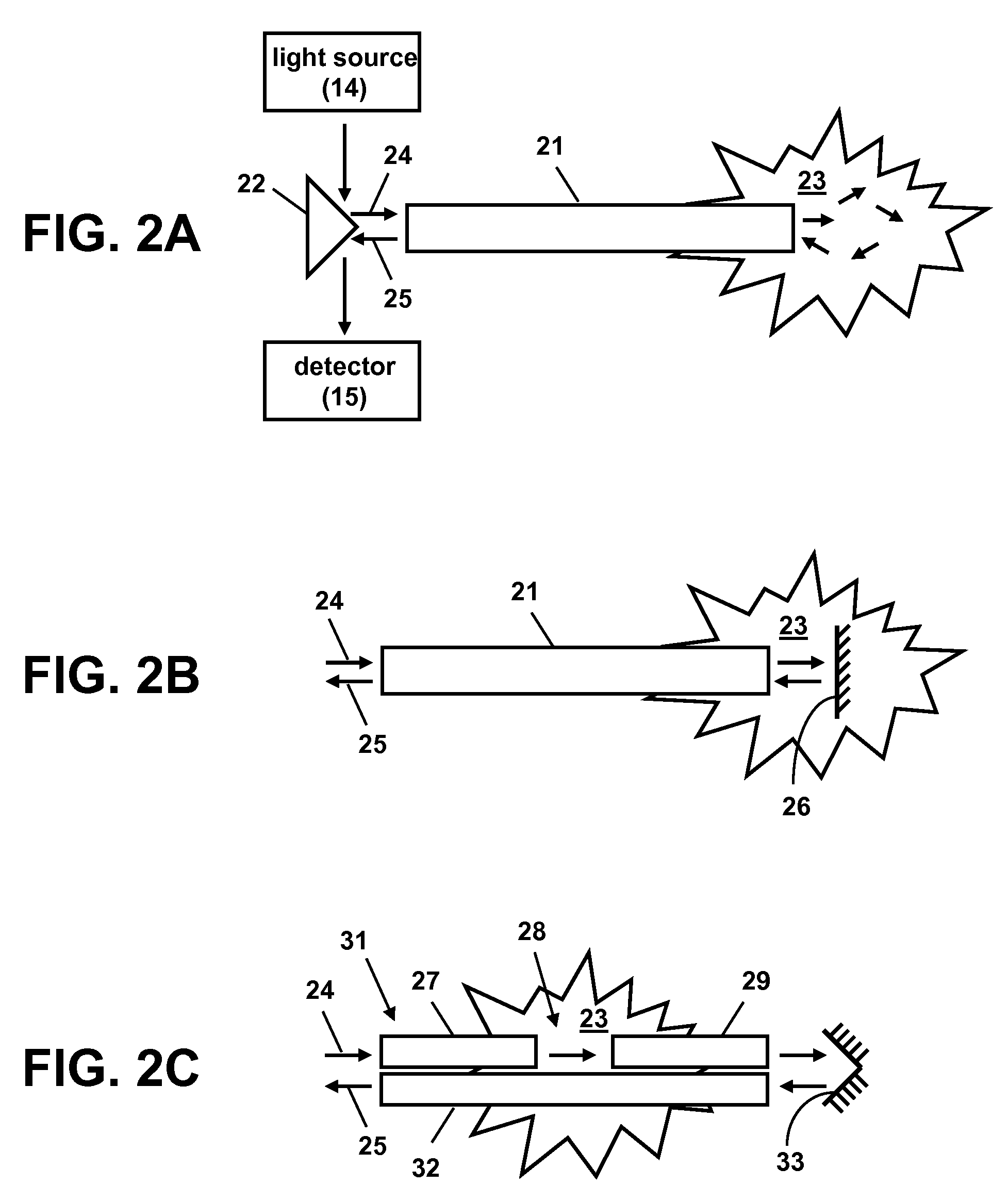Indwelling Fiber Optic Probe for Blood Glucose Measurements
a fiber optic probe and fiber optic technology, applied in the field of glucose monitoring, can solve the problems of inconvenient patient care, high cost, and difficulty of frequent finger pricking, and achieve the effects of reducing overhead time of removing blood from the body, and reducing blood loss and possible saline infusion
- Summary
- Abstract
- Description
- Claims
- Application Information
AI Technical Summary
Benefits of technology
Problems solved by technology
Method used
Image
Examples
Embodiment Construction
[0024]FIG. 1 shows a schematic illustration of a glucose monitoring device comprising an indwelling fiber optic probe according to the present invention. A non-disposable illumination and collection fiber optic 11 can be coupled to a short disposable indwelling fiber optic probe 12 that can be integrated into a catheter that is inserted into a patient 13. The illumination portion of the fiber optic 11 can be connected to an ex vivo light source 14 for delivery of the illumination light to the patient tissue to be analyzed. The light source can be a near-infrared (NIR) light source, such as a thermal source, a tunable laser, or multiple lasers at selected wavelengths. The collection portion of the fiber optic 11 can be connected to an ex-vivo optical detector 15 for the detection of the tissue spectrum in the NIR spectral region. For example, the fiber optic probe 12 can be inserted intravascularly into blood tissue. Glucose in the blood can affect the detected transmitted or reflect...
PUM
 Login to View More
Login to View More Abstract
Description
Claims
Application Information
 Login to View More
Login to View More - R&D
- Intellectual Property
- Life Sciences
- Materials
- Tech Scout
- Unparalleled Data Quality
- Higher Quality Content
- 60% Fewer Hallucinations
Browse by: Latest US Patents, China's latest patents, Technical Efficacy Thesaurus, Application Domain, Technology Topic, Popular Technical Reports.
© 2025 PatSnap. All rights reserved.Legal|Privacy policy|Modern Slavery Act Transparency Statement|Sitemap|About US| Contact US: help@patsnap.com



